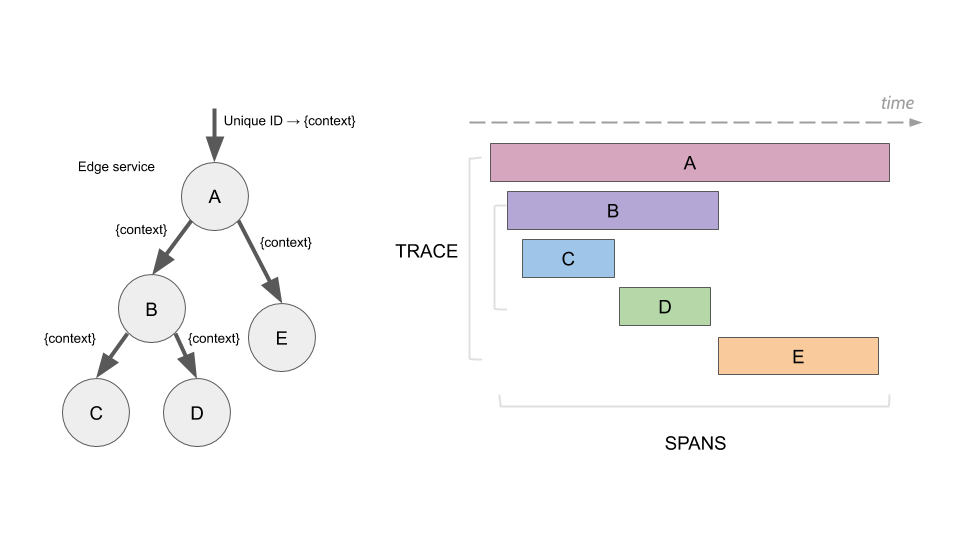 In this blog I will guide you on
In this blog I will guide you on
- How to use OpenTracing with a Quarkus application.
- How to display your OpenTracing information on Jaeger UI.
In this blog I will use distributed tracing to instrument my services to gather insights into my service architecture. I am using distributed tracing for monitoring, network profiling, and troubleshooting the interaction between components in modern, cloud-native, microservices-based applications.
Using distributed tracing lets you perform the following functions:
- Monitor distributed transactions
- Optimize performance and latency
- Perform root cause analysis
Red Hat OpenShift distributed tracing consists of two components:
Red Hat OpenShift distributed tracing platform – This component is based on the open source Jaeger project.
Red Hat OpenShift distributed tracing data collection – This component is based on the open source OpenTelemetry project.
This document is based on OpenShift 4.9. See Distributed tracing release notes.
OpenShift distributed tracing platform Operator is based on Jaeger 1.28.
OpenShift distributed tracing data collection Operator based on OpenTelemetry 0.33. (Technology Preview)
OpenTelemetry is not used in this blog.
OpenTracing and Jaeger
In the the following diagram I will show you how the flow will be between your application and Jaeger.

To make the demo simpler I am using the AllInOne image from Jaeger. This will install collector, query and Jaeger UI in a single pod, using in-memory storage by default.
More details can be found
Enabling Distributed Tracing
A cluster administrator has to enable the Distributed Tracing Platform operator once.
As of OpenShift 4.9, this is be done easily done by using the OperatorHub on the OpenShift console. See Installing the Red Hat OpenShift distributed tracing platform Operator.

In this demo we do not install the OpenShift Elasticsearch Operator, because we us only in-memory tracing – no perstistance.
Make sure you are logged in as cluster-admin:
After a short time, you can check that the operator pod is created and running and the CRD is created:
$ oc get pod -n openshift-operators|grep jaeger
jaeger-operator-bc65549bd-hch9v 1/1 Running 0 10d
$ oc get crd jaegers.jaegertracing.io
NAME CREATED AT
jaegers.jaegertracing.io 2021-12-08T15:51:29ZCreate a New Project
Create a new project (for example jaeger-demo) and give a normal user (such as developer) admin rights onto the project:
$ oc new-project jaeger-demo
Now using project "jaeger-demo" on server "https://api.yourserver:6443".
You can add applications to this project with the 'new-app' command. For example, try:
oc new-app rails-postgresql-example
to build a new example application in Ruby. Or use kubectl to deploy a simple Kubernetes application:
kubectl create deployment hello-node --image=k8s.gcr.io/serve_hostname
$ oc policy add-role-to-user admin developer -n jaeger-demo
clusterrole.rbac.authorization.k8s.io/admin added: "developer"Login as the Normal User
$ oc login -u developer
Authentication required for https://api.yourserver:6443 (openshift)
Username: developer
Password:
Login successful.
You have one project on this server: "jaeger-demo"
Using project "jaeger-demo".Create Jaeger
Create a simple Jaeger instance with the name my-jager
$ cat <<EOF |oc apply -f -
apiVersion: jaegertracing.io/v1
kind: Jaeger
metadata:
name: my-jaeger
spec: {}
EOF
jaeger.jaegertracing.io/my-jaeger createdWhen the Jaeger instance is up and running you can check the service and route.
$ oc get svc
NAME TYPE CLUSTER-IP EXTERNAL-IP PORT(S) AGE
my-jaeger-agent ClusterIP None <none> 5775/UDP,5778/TCP,6831/UDP,6832/UDP 73m
my-jaeger-collector ClusterIP 172.30.127.95 <none> 9411/TCP,14250/TCP,14267/TCP,14268/TCP 73m
my-jaeger-collector-headless ClusterIP None <none> 9411/TCP,14250/TCP,14267/TCP,14268/TCP 73m
my-jaeger-query ClusterIP 172.30.243.178 <none> 443/TCP,16685/TCP 73m
$ oc get route my-jaeger -o jsonpath='{.spec.host}'
my-jaeger-jaeger-demo.apps.rbaumgar.demo.netOpen a new browser window and go to the route url and login with your OpenShift login (developer).


Sample Application
Deploy a Sample Application
All modern application development frameworks (like Quarkus) supports OpenTracin features, Quarkus – USING OPENTRACING.
To simplify this document, I am using an existing example. The application is based on an example at GitHub – rbaumgar/otracing-demo-app: Quarkus demo app to show OpenTracing with Jaeger.
Deploying a sample application otracing-demo-app end expose a route:
$ cat <<EOF |oc apply -f -
apiVersion: apps/v1
kind: Deployment
metadata:
labels:
app: otracing-demo-app
name: otracing-demo-app
spec:
replicas: 1
selector:
matchLabels:
app: otracing-demo-app
template:
metadata:
labels:
app: otracing-demo-app
spec:
containers:
- image: quay.io/rbaumgar/otracing-demo-app-jvm
imagePullPolicy: IfNotPresent
name: otracing-demo-app
---
apiVersion: v1
kind: Service
metadata:
labels:
app: otracing-demo-app
name: otracing-demo-app
spec:
ports:
- port: 8080
protocol: TCP
targetPort: 8080
name: web
selector:
app: otracing-demo-app
type: ClusterIP
---
apiVersion: route.openshift.io/v1
kind: Route
metadata:
labels:
app: otracing-demo-app
name: otracing-demo-app
spec:
path: /
to:
kind: Service
name: otracing-demo-app
port:
targetPort: web
EOF
deployment.apps/otracing-demo-app created
service/otracing-demo-app created
route.route.openshift.io/otracing-demo-app exposedYou can add an environment variable with the name JAEGER_ENDPOINT if you need to specify a different url for the Jaeger Collector. Default: http://my-jaeger-collector-headless:14268/api/traces
Test Sample Application
Check the router url with /hello and see the hello message with the pod name. Do this multiple times.
$ export URL=$(oc get route otracing-demo-app -o jsonpath='{.spec.host}')
$ curl $URL/hello
hello
$ curl $URL/sayHello/demo1
hello: demo1
$ curl $URL/sayRemote/demo2
hello: demo2 from http://otracing-demo-app-jaeger-demo.apps.rbaumgar.demo.net/
...Go to Jager URL.
Reload by pressing F5.
Under Service select my-service.
Find Traces…

The service name is specified in the application.properties (quarkus.application.name) of the demo app.
The url of the Jaeger collector is specified in the application.properties (quarkus.jaeger.endpoint=http://my-jaeger-collector-headless:14268/api/traces).
Open one trace entry and expand it to get all the details.

Done!
If you want more details on how the OpenTracing is done in Quarkus go to the Github example at GitHub – rbaumgar/otracing-demo-app: Quarkus demo app to show OpenTracing with Jaeger.
Remove this Demo
$ oc delete deployment,svc,route otracing-demo-app
$ oc delete jaeger my-jaeger
$ oc delete project jaeger-demoThis document:

